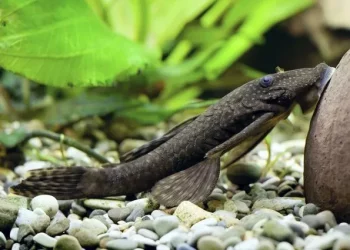The Australian lungfish (Neoceratodus forsteri) is a large, freshwater fish that is native to eastern Australia. As the name suggests, this species is a member of the lungfish family, which is known for its ability to breathe air using lung-like organs. In addition to their unique respiratory system, Australian lungfish are also notable for their size, which can range from just a few centimeters to over a meter in length.
Juvenile Australian lungfish typically measure around 10-15 centimeters in length, but can grow quickly under the right conditions. With proper care and nutrition, they can reach lengths of 50 centimeters or more within just a few years. Once they reach maturity, however, their growth slows down considerably. The average adult Australian lungfish measures around 1.2-1.5 meters in length, although some individuals have been known to reach lengths of up to 2 meters.
One of the reasons why Australian lungfish can grow so large is their longevity. These fish are known to live for several decades in the wild, with some individuals living for over 100 years. This long lifespan allows them to continue growing and reaching their maximum size over many years.
In addition to their size, Australian lungfish are also notable for their appearance. They have a long, cylindrical body with small scales and a light brown or grey coloration. Their fins are relatively small compared to other fish, and their tail is elongated and paddle-like, allowing them to swim slowly and gracefully through the water.
Despite their size and longevity, Australian lungfish are not commonly kept as pets due to their specialized care requirements. They require large, well-filtered tanks with plenty of hiding places and adequate water flow. They also require a specialized diet that includes live or frozen foods such as worms, shrimp, and fish. In addition, Australian lungfish are protected under Australian law, and it is illegal to take them from the wild without a permit.
Overall, the Australian lungfish is a fascinating and impressive species of fish that is well-adapted to its freshwater environment. Its large size and longevity make it a valuable subject of study for biologists and fish enthusiasts alike, and its unique respiratory system and behavior continue to captivate researchers and nature lovers around the world.


























